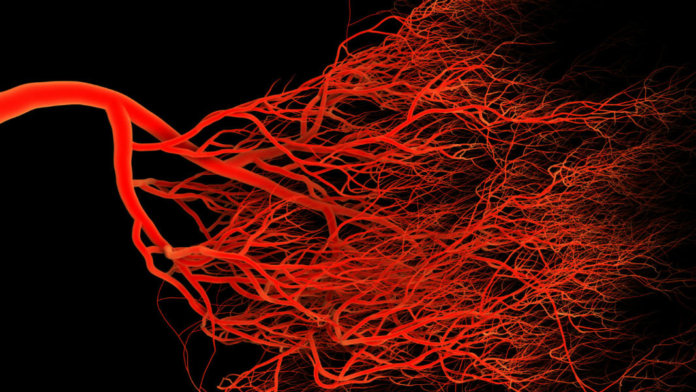Bioprinting enthusiasts envision a future where we’ll be able to print functional human organs on demand, putting an end to transplant waiting lists and health problems and deaths related to organ failure.
That future isn’t unrealistic nor out of reach, but it’s going to arrive slowly—artificially re-creating an organ is a massively complicated task involving dozens of small pieces that must fit together perfectly in order to work as intended.
One of those pieces fell into place just last week, when a multi-national team published a study in the journal Biomicrofluidics detailing its efforts to develop 3D printed vascularized liver tissue. They used the artificial tissue for drug toxicity testing, mimicking a living environment to analyze the effect certain drugs would have on patients.
The team printed blood vessels for the liver tissue using a gel-based “sacrificial” ink, so named because the ink is temporary—it’s used to create the hollow channels that become vessels, but washed away once the vessels are set.
They then added endothelial stem cells to the vessels (endothelial cells line the inside of all blood vessels, forming a selectively permeable barrier across which chemicals and white blood cells can move).
Adding endothelial cells to the bioprinted vessels had the effect of delaying permeability of biomolecules into the 3D liver construct, and increasing viability of the tissue’s other cells. In short, the endothelial layer played a protective role, just like it does in our living blood vessels.
“Based on our finding, the endothelial layer delays the drug diffusion response, compared to without the endothelial layer,”said Su Ryon Shin, an instructor conducting research at the Harvard Medical School and one of the study’s authors. “They don’t change any drug diffusion constants, but they delay the permeability, so they delay the [response] as it takes time to pass through the endothelial layer.”
So why does this matter?
First of all, adding an endothelial layer to artificial vessels gets scientists much closer to living human vessels, meaning they can observe the way a drug absorbs into the liver without needing to perform studies on patients.
The technique can also be adapted to different cell types for patient-tailored testing of drug toxicity. “We are using human cells, and when we developed this technique we [did so in a way that let us] easily change the cell type, using maybe a patient’s primary cell or their endothelial cells and we can [potentially] create a human-specialized tissue model,”Shin said.
The research team sees this advance as an early step in developing more complex bioprinted drug testing systems, like multi-organ-on-a-chip devices and sample models for other organ and tissue systems. According to AIP Publishing, “Cancer drug therapies, for example, require an understanding of the effects on various tissues outside of just the cancer tissue itself, and would benefit greatly from such a construct.”
The study adds to prior work bioprinting blood vessels including Chinese scientists’ successful implantation of 3D printed vessels in monkeys at the end of 2016, and a team of nanoengineers from UCSD implanting printed vessel networks in mice.
Creating artificial vessels that behave just like real ones will enable testing on human tissues without actually using human subjects. Animal testing has been the stand-in until now, but besides the ethical dilemmas this raises, animal testing can only yield approximate results—because animals aren’t humans.
Being able to re-create vascularized tissue that behaves identically to our own, then, holds promise both for drug testing and for bioprinting as a whole.



